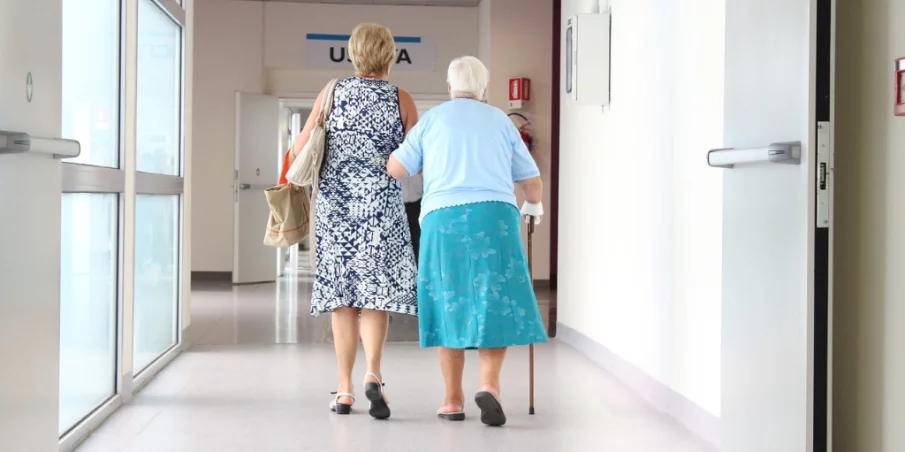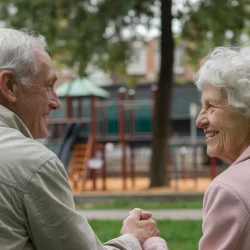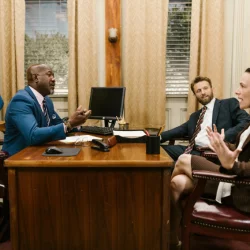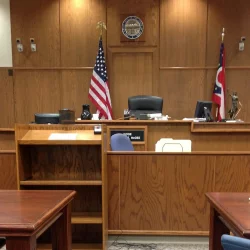Senior Living Lawsuits: What You Need to Know About Elder Care Legal Issues

When you’re looking into senior living options for yourself or a loved one, the last thing you want to think about is legal trouble. But lawsuits in the senior living and elder care industry are more common than you might expect, and they often hit close to home for families. These cases usually stem from concerns about resident care, staffing issues, or broken promises about services. If you’ve ever searched for “senior living lawsuits,” you’re probably wondering what’s going on and what it means for you. Let’s dive into the world of elder care lawsuits, unpack why they happen, and share some tips to help you navigate the senior living landscape with confidence.
Why Do Senior Living Lawsuits Happen?
Senior living lawsuits often arise when families feel that a facility hasn’t lived up to its promises. These communities—whether assisted living, memory care, elder care, or nursing homes—are supposed to provide a safe, caring environment for residents. But when something goes wrong, like a fall or a billing dispute, families may turn to the courts for answers. The reasons behind these lawsuits are varied, but they tend to cluster around a few key issues that are worth understanding.
Negligence and Poor Resident Care
Negligence is one of the biggest drivers of lawsuits in senior living. This can include anything from failing to prevent falls to not providing proper medical care. For example, a 2021 case against Aegis Living in California and Washington resulted in a $16.25 million settlement. Families claimed the company misled residents about staffing levels, leading to inadequate care for vulnerable seniors. Imagine a resident left unattended in a memory care unit, wandering off or getting hurt—that’s the kind of thing that sparks these cases. Negligence lawsuits often focus on harm caused by a lack of supervision or failure to meet basic care standards.
Understaffing Problems
Staffing shortages are a huge issue in senior living, and they’re at the heart of many lawsuits. Facilities need enough trained workers to help residents with daily tasks, like bathing or taking medications. But when there aren’t enough staff, care suffers. A 2017 lawsuit against Brookdale Senior Living, the largest assisted living chain in the U.S., alleged that understaffing led to “devastating” consequences for residents, like missed meals or untreated injuries. In another case, a Petaluma memory care facility, MuirWoods, was hit with a $20.5 million judgment in 2024 after a resident’s repeated falls and death were linked to negligent staffing practices. These cases show how stretched-thin staff can lead to real harm.
Misleading Contracts and Billing
Another common issue is disputes over contracts or billing. Senior living facilities often charge extra for services based on a resident’s needs—like more help with dressing or memory care. But some lawsuits claim facilities don’t deliver what they promise. For instance, a 2017 case against Oakmont Senior Living in California accused the company of charging high fees (up to $10,000 a month) while basing staffing on profit-driven budgets, not resident needs. Families felt cheated when the care didn’t match the price tag. These cases often involve claims of fraud or elder financial abuse, especially when vulnerable seniors are overcharged for subpar services.
High-Profile Examples of Senior Living Lawsuits
To get a sense of how these lawsuits play out, let’s look at a few notable cases that have made headlines. These examples show the range of issues families face and why legal action becomes a last resort.
Brookdale Senior Living: Understaffing Allegations
Brookdale, a major player with over 1,000 facilities, has faced multiple lawsuits over staffing and care quality. In 2021, more than 80 families filed a federal lawsuit in California, claiming Brookdale’s understaffed facilities failed to provide basic care. One family reported their father, a dementia patient, suffered unreported falls and missed medications, leading to kidney failure and death. Another case in Florida involved a resident who froze to death after being left unattended outside for 12 hours. These lawsuits highlight how understaffing can lead to tragic outcomes, pushing families to seek justice.
Aegis Living: Misleading Staffing Promises
In 2021, Aegis Living settled two class-action lawsuits for $16.25 million. Residents in California and Washington argued that Aegis set staffing levels based on budgets, not resident needs, violating elder abuse and consumer protection laws. One family found their mother dehydrated and neglected, requiring hospitalization. The settlement included a three-year injunction requiring Aegis to improve staffing practices. This case shows how families can hold facilities accountable when promised care doesn’t match reality.
MuirWoods Memory Care: Neglect and Wrongful Death
A 2024 lawsuit against MuirWoods Memory Care in Petaluma, California, resulted in a $20.5 million judgment. The family of Theresa Donahue, an 84-year-old resident with dementia, claimed she fell four times in nine weeks, fracturing her hip in the final fall. They argued that negligence and understaffing contributed to her death. The jury’s massive award, including $17 million in punitive damages, sent a strong message about the consequences of neglecting residents.
The Impact of Lawsuits on Families and Facilities

Senior living lawsuits aren’t just about money—they’re about trust. When a family places a loved one in a facility, they’re counting on the staff to provide compassionate, reliable care. A lawsuit often comes after months of frustration, watching a loved one suffer or decline. For families, these cases can bring compensation for medical bills, pain, or even funeral costs, but they also shine a light on systemic problems.
For facilities, lawsuits can be a wake-up call. A 2023 article from Senior Justice Law Firm noted that legal action often pushes facilities to change their practices, like hiring more staff or improving training. But there’s a flip side: some argue that frivolous lawsuits drain resources that could be used for resident care. In Pennsylvania, for example, a 2018 report claimed Medicaid spent over $104 million on liability costs, with some blaming predatory lawyers for filing baseless claims. Still, when a lawsuit uncovers real neglect, it can force accountability and better care for everyone.
How to Protect Yourself or Your Loved One
If you’re considering a senior living community, the idea of lawsuits might feel overwhelming. But you don’t have to live in fear—there are practical steps you can take to choose a safe, trustworthy facility and avoid legal headaches down the road.
Research the Facility Thoroughly
Before committing, dig into the facility’s track record. Visit in person, talk to residents and staff, and check online reviews. Look up state inspection reports, which often list violations or complaints. For example, a 2019 case against Cedar Village Memory Care in Oregon revealed 16 substantiated reports of abuse and neglect since 2010. Public records like these can give you a clearer picture of a facility’s history.
Ask About Staffing and Care Plans
Find out how the facility handles staffing. How many caregivers are on duty during peak times or overnight? Are they trained to handle dementia or mobility issues? Ask how they create care plans and whether they adjust staffing based on residents’ needs. A facility that’s open about its staffing ratios is more likely to prioritize care.
Review Contracts Carefully
Contracts can be dense, but they’re your roadmap to understanding what you’re paying for. Make sure the services promised—like daily activities or medical support—are clearly spelled out. If something feels vague, ask for clarification. A 2020 New York Times article noted that some facilities charge more for extra needs but don’t use those assessments to adjust staffing, which can lead to disputes. Knowing what you’re signing up for can prevent surprises later.
The Bigger Picture: Why These Lawsuits Matter
Senior living lawsuits aren’t just about one family or one facility—they reflect broader challenges in elder care. As the U.S. population ages (55.7 million people were 65 or older in 2020, with 80.8 million projected by 2040), the demand for senior living is skyrocketing. But with that growth comes pressure to keep costs down, sometimes at the expense of care. Lawsuits like the $20.5 million MuirWoods case or the $16.25 million Aegis settlement show what happens when profit motives overshadow resident well-being.
These cases also remind us how vulnerable seniors are. Whether it’s a fall, dehydration, or emotional neglect, the stakes are high when someone depends on a facility for their daily needs. Lawsuits give families a voice, but they’re also a call to action for the industry to do better—whether that’s hiring more staff, improving training, or being honest about what they can deliver.
Wrapping It Up
Senior living lawsuits might sound like a heavy topic, but they’re a window into what really matters: ensuring our loved ones are safe and cared for. From negligence and understaffing to misleading contracts, these cases highlight the challenges of elder care and the importance of accountability. If you’re exploring senior living options, take your time to research, ask questions, and read the fine print. That way, you can find a community that truly delivers on its promises.
At the end of the day, it’s about trust—trust that a facility will treat your loved one with the respect and care they deserve. By staying informed and proactive, you can help make sure that trust is well-placed, and hopefully, keep lawsuits out of the picture altogether.
More to Read:
Previous Posts:
Next Posts:





